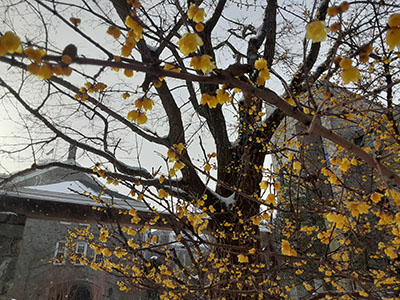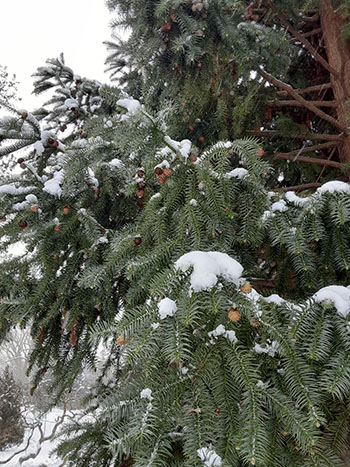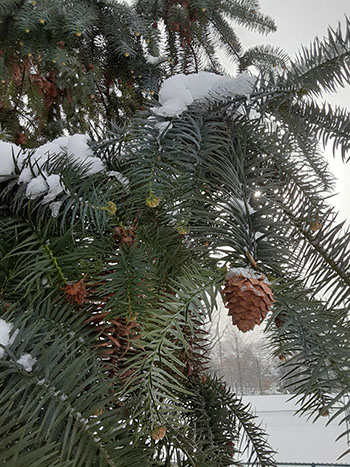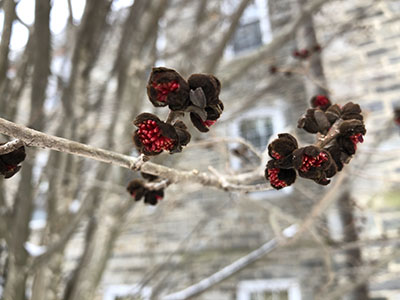
Plants of the Week: Feb. 8

The translucent yellow blooms of Chimonanthus praecox arrive in late January with a bang. The effect of light shining through the flowers and their novel, zesty scent, is spellbinding. Any plant in full bloom mid-winter is going to turn a few heads, but even unseen this shrub begs to be discovered. The flowers perfume the surroundings, near and far, with an aroma unmatched and unforgettable. It stands to reason why this plant is commonly called fragrant wintersweet. Unremarkable outside of its bloom period, C. praecox is well suited in a mixed-shrub border. More importantly, this shrub should be sited near a well- trafficked area, where the scent and sight of the flowers can be appreciated. Photo credit: R. Payne-Meyer

The China fir, Cunninghamia lanceolata (Chinafir) is a unique conifer with foliage that varies from dark green to, at its best, piercing light blue. Needles are large, sharp, and tapered towards the tip. The round artichoke-like cones are pretty, and like the foliage, spiky.
This tree keeps a neat shape and dense growth from top to bottom. To me, this species has a primordial and tropical look. Mature plants can become quite large, upwards of 70’.

As tough as it is lovely, this conifer tolerates severe heat and drought. This makes C. lanceolata a great choice for this region, where the summer weather can be inhibitory to some coniferous species (think Abies and Larix). C. lanceolata ‘Glauca’ is a worthy selection featuring impressive blue foliage and winter hardiness. Photo credit: R. Payne-Meyer

With attractive exfoliating bark, clean and colorful foliage, Parrotia persica is often lauded as a multi-season interest tree. Yet one of its most fun features goes largely unnoticed! Small red flowers, enclosed by dark brown bracts appear in late January, a real treat for those with a discerning eye. The red looks great with the khaki and gray tones of the bark. Examination of the flowers has also brought to my attention the wonderful branching habit of this tree. Low branches make the base broad, though the overall habit remains tight and upright.
As the specific epithet persica and common name Persian ironwood imply, modern-day Iran is home for this tree, specifically the Caucasus. P. persica is a great fit for our climate too, and develops into a wonderful medium-large specimen. This tree is sure to impress throughout the seasons and years, with bark and stature that seems to just get better with age. Photo credit: J. Coceano
Botanical highlights like these provide liveliness and awe as many yearn for such stimulation. Though the Arboretum presently remains closed, I hope you find joy in this indirect offering. How are you planning to improve your garden’s winter appeal?





Diane Mattis
Posted at 08:52h, 11 FebruaryI was not only surprised but delighted to see the information about the Parrotia persica! Makes me want to just in the car with my Sony zoom lens to get some photos of it! Thanks so much for this information.
Diane Mattis
Posted at 08:53h, 11 FebruarySorry for the typing error. Caught it too late to change it 🙁